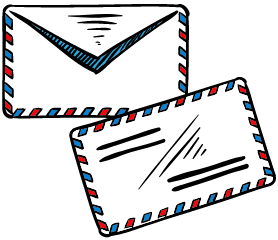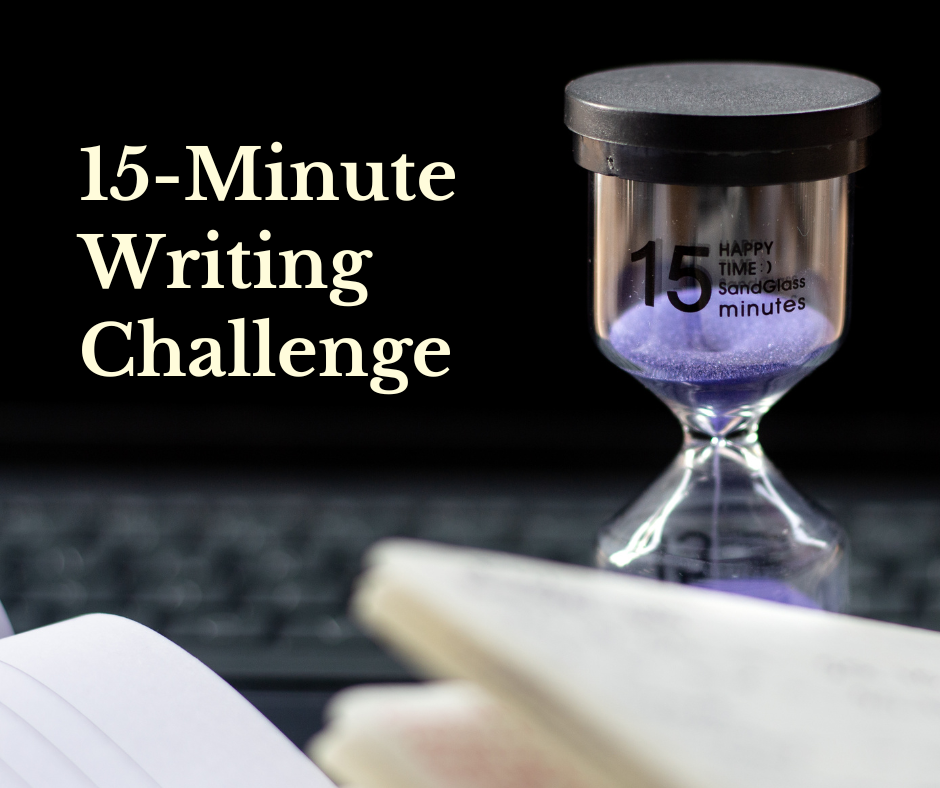The idea of doing your writing work at home sounds lovely, easeful. But the reality is often like wading through molasses.
The soft couch and soft cat call you to nap. Your partner’s loud on Zoom. Laundry and dishes are never done. Your living room work corner doubles as your family’s dumping ground for school papers and spare chargers. Even if you have an office with a door that closes, toggling between home brain and writing brain makes you feel like you’re never as effective as you’d like. You find yourself cleaning the oven knobs (again!) as an excuse not to write.
Nobody can wave a magic wand and erase everything generating that molasses. But help is available from an often-overlooked source. You can deliberately recruit your writing space—and the physical habits you cultivate in it—to effectively counterbalance all the drain and distraction.
Doing so can make writing, and the sustained attention and energy needed for complex projects, feel accessible again. Words and ideas can flow more easily, you can work more efficiently and creatively, and you’re more likely to have something left at the end of the day for all the non-work people and fun you love.
Why does tending to the physical components of writing make such a difference?
Your body in space—how it feels and functions, what you’re surrounded by—matters to your ability to do brainy work, and to the quality of that work. Our bodies have different baselines and different daily experiences. I’ll always encourage you to work towards comfort and ease from within your own capacities and patterns. But no matter your baseline, discomfort, physical distractions, and physical action barriers all take up mental bandwidth.
If you have to push past many friction points on your way to writing, you’ve used up energy just getting started that could have gone to focused and efficient work. If you get those discomforts, distractions, and action barriers out of your way, you free up that mental bandwidth and energy for your ideas, instead.
So how do you actually do it?
Start with the strategies below. I offer them not as rules, but as tools to add to your existing kit. Adopt them as-is, or adapt them to suit your particular brain, body, and working style.
Let yourself imagine how you want to feel
The more you love your home workspace—the more it invites you in, suits your working style, and feels like you—the more likely you are to sit down in it and apply yourself.
So ask yourself: What would your dream office look like, feel like, and include? How do you want to feel when you sit down at your desk?
The ideal you’ve just conjured is not an all-or-nothing proposition. What can you change about your workspace and your physical approach to tasks to help yourself move towards that ideal?
For example, if you want to feel spacious, quiet, and alone—like this space is really yours even though it’s in a shared part of your house—you might:
- Purchase or save up for noise-cancelling headphones and a hook of some kind so they’re within easy reach without gobbling space on your desktop.
- Hang in front of your desk a painting that’s completely to your own taste, or gives you that feeling of spaciousness. Move your kid’s drawings elsewhere so that everything in your visual field reflects you as an independent, big-thinking adult and helps you tune out family life.
- Turn your desk to face a different direction. Or if you stand at the kitchen counter to work, try facing away from the sink of dishes, instead of towards it.
If you want to feel calm and focused, like there aren’t a million demands pressing on you all the time, you might:
- Leave a note on your keyboard every night that tells you exactly where to start tomorrow. That way you won’t have to overcome the action barrier (and common time suck) of deciding what to do when you first get to your desk.
- Start doing domestic tasks in a new rhythm so they’re not taking up brain space during prime writing hours. Yes, this may require communication with the people you live with.
- Curate your objects. Choose a color palette that soothes you. Remove to a bin in the closet any electronics or random junk you never seem to actually use.
Acknowledge what’s annoying you—and take time to fix it
What annoys you about your current workspace?
Trust your gut response to that question, even if the issue seems silly or small. It’s a fantastic clue to where there’s unnecessary friction.
Small distractions, annoyances, or discomforts may not seem important, especially when you’re wildly busy. But if you’re trying to fuel focus, ease, and high-quality, sustainable work over time and to balance the domestic forces conspiring against you, every fixable issue is worth fixing for the sake of your writing brain.
One of my clients had a squeaky keyboard tray. Small annoyance, right? She didn’t realize until we worked together that the squeak was the thing making her dread sitting down to work every morning. When she took two minutes in our session to get the WD40 from the closet, spray the tray, and listen to it glide silently, her face lit up and her body softened with relief.
So what simple step can you take today to get your annoyance out of the way? Here are a few more examples to inspire action.
External monitor not centered? This becomes a literal pain in your neck very quickly. Get an extension cord from the closet or order one online right now so you have enough length to center the monitor in front of your chair.
Space feeling dull or off? Bring in a favorite object from another part of the house for a quick perk-up. Or schedule ten minutes once or twice a week to work towards the better feeling you now know how to articulate.
Desk more cluttered with your own detritus than works for your brain? Addressing this visual and mental drain doesn’t have to be a monolithic, overwhelming task. Schedule in fifteen minutes once or twice a week in your brain’s sleepier time to chip away at it.
You could even make a mini playlist of three energizing songs you put on just for tidying and readying your writing space. When the playlist is done, you’re done with the task and give yourself permission not to worry about it again until your next scheduled time. Note: The playlist trick is also great for setting a fun time boundary on email, admin, or other tasks that tend to encroach on writing time!
Minimize friction so you can efficiently begin writing sessions
Your home office is full of meeting places between body, brain, and physical objects. If you never think about them, these meeting places can subtly slow down your work and pull your focus as you try to write. Or even subconsciously make it so you don’t want to come into your space to write at all—as the squeaking keyboard tray did for my client.
But a few small tweaks to minimize the decisions you have to make and the distractions you encounter can radically reduce friction on the way to writing flow. These three have helped many of the writers I coach.
First, build a bridge from one writing session to the next. When you wrap up a writing session, you might:
- Leave a note on top of your keyboard with the one or two things you’ll start with in your next one. Be specific and granular.
- Leave any physical resources you’ll need next to your computer, not in your work bag or a drawer. Put away the things you won’t need.
- Leave your manuscript—and only your manuscript—open on your computer so it’s the first and only thing you see when you next sit down.
Second, build a set of body habits that create a mental expectation of focused writing. A launch and landing checklist, if you will, or an opening and closing ritual for each writing session (even the fifteen-minute ones). This is a great bulwark against domestic task distractions because it helps you deliberately make the transition from home life to work life and back, rather than treating the boundary between them as permeable. Exiting writing time with care helps you be more present with your people, too.
Your launch and landing will be personal. But it could look like:
- Get tea and light a candle to begin. Blow out the candle and rinse your mug to end.
- Choose two specific movement exercises to begin and end.
- Make an open/closed or writing/not writing sign for your door that you flip appropriately to begin and end.
Whatever you choose, your goal is to use your body to prime your brain. You’re setting the expectation of, and boundaries around, focused writing time. So use this particular ritual only for writing, not for other work or for email.
Third, get clear on what tools let you do your best work. Once you know, put them where you’ll need them. Don’t force yourself to find them every day or—worse—skip using them altogether if they’re not nearby and you’re feeling too tired to get up.
Work tools to have at hand might include:
- a consolidated bin of your current research books
- your favorite notebook
- index cards for physically restructuring your manuscript.
I figure out developmental editing snarls by drawing maps and charts, so I keep a case of my favorite markers and a sketchpad next to my laptop during those projects.
Body support tools might include
- a favorite hot or cold beverage
- those noise-cancelling headphones
- a neck pillow.
If you’re cold all the time, keep a cozy blanket or socks right there on your chair or in a basket under your desk so they’re waiting for you every day. Don’t undermine your concentration by staying cold.
Whatever your best tools are, make them easy to access. Erase as much friction as possible from the process of getting started and dropping into focused, easeful work.
Take action right now
If you haven’t given your physical approach to writing some thought in a while, you want to make your writing space a little nicer but think you can’t justify the time or energy, or you keep talking yourself out of a fix you know would help, please consider this your push to do it.
The way you feel coming to work and in your work every day matters to the quality of your work—and to how you feel after work, too, frankly.
Before you click away, set a timer and take five minutes to tend to your space or design a new habit.
Actually put into your calendar thirty minutes for putting up the whiteboard that will help you organize your book. Make yourself the keyboard sign that reminds you to stretch before you start typing. Grab a colorful pillow from another part of the apartment to add color, texture, and comfort to your office.
Here’s to writing in a space that works for you, instead of against you!
Related Posts & Links:
Is tidying your desk procrastination?
Dealing with the loss of a physical boundary between work and home
The case for getting dressed for work
Hannah’s Website: https://hannahdk.com/







